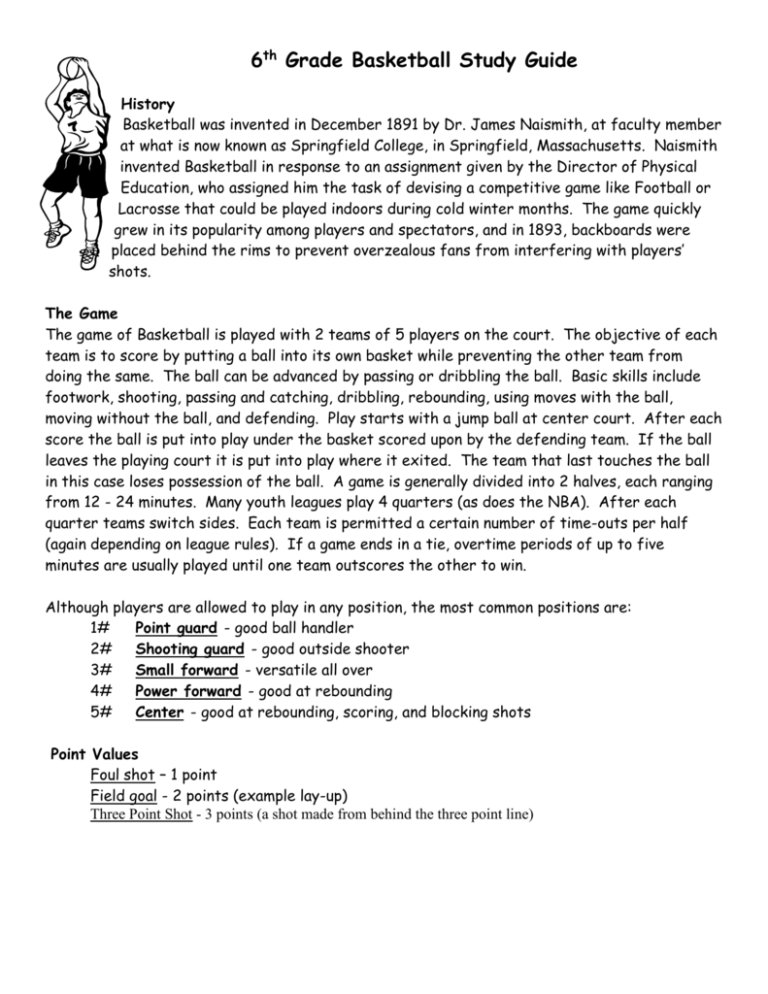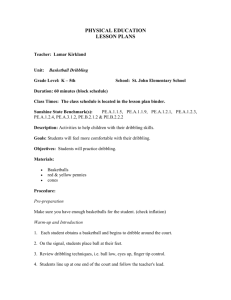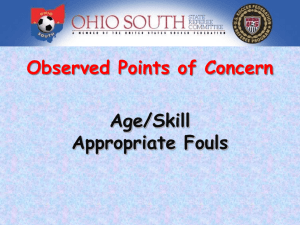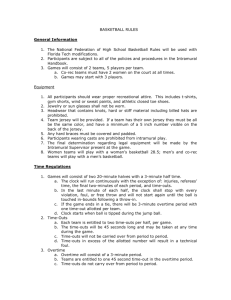6th Grade Basketball Study Guide: Rules, History, Positions
advertisement

6th Grade Basketball Study Guide History Basketball was invented in December 1891 by Dr. James Naismith, at faculty member at what is now known as Springfield College, in Springfield, Massachusetts. Naismith invented Basketball in response to an assignment given by the Director of Physical Education, who assigned him the task of devising a competitive game like Football or Lacrosse that could be played indoors during cold winter months. The game quickly grew in its popularity among players and spectators, and in 1893, backboards were placed behind the rims to prevent overzealous fans from interfering with players’ shots. The Game The game of Basketball is played with 2 teams of 5 players on the court. The objective of each team is to score by putting a ball into its own basket while preventing the other team from doing the same. The ball can be advanced by passing or dribbling the ball. Basic skills include footwork, shooting, passing and catching, dribbling, rebounding, using moves with the ball, moving without the ball, and defending. Play starts with a jump ball at center court. After each score the ball is put into play under the basket scored upon by the defending team. If the ball leaves the playing court it is put into play where it exited. The team that last touches the ball in this case loses possession of the ball. A game is generally divided into 2 halves, each ranging from 12 - 24 minutes. Many youth leagues play 4 quarters (as does the NBA). After each quarter teams switch sides. Each team is permitted a certain number of time-outs per half (again depending on league rules). If a game ends in a tie, overtime periods of up to five minutes are usually played until one team outscores the other to win. Although players are allowed to play in any position, the most common positions are: 1# Point guard - good ball handler 2# Shooting guard - good outside shooter 3# Small forward - versatile all over 4# Power forward - good at rebounding 5# Center - good at rebounding, scoring, and blocking shots Point Values Foul shot – 1 point Field goal - 2 points (example lay-up) Three Point Shot - 3 points (a shot made from behind the three point line) Fouls If a player commits 5 fouls, they are disqualified from the game. When an opponent is fouled in the act of shooting, the opponent is awarded 2 free throws. When you foul an opponent other than shooting, the opponent is awarded the ball out of bounds. 1 in 1 is awarded after a nonshooting foul when one team has committed 7 fouls. Some fouls are as follows: holding, pushing, charging, tripping or slapping. Traveling or walking- Taking more than 1 step before the start of a dribble. Double dribble- Dribbling with 2 hands on the ball or dribbling, then stopping, and than dribbling again. Personal Foul - Called when illegal body contact occurs between opposing player. Common examples are holding, charging, tripping, blocking, pushing, or interference. A personal foul results in either a player taking free throws or a team losing possession of the ball. Court: A. Free Throw/ Foul Line B. Basket C. Paint/ 3 Second Lane D D. Mid/ Half Court Line E. Top of key B A H E C F. Sideline G. Baseline G I H. Jump Ball Circle F I. 3 Point Arc








